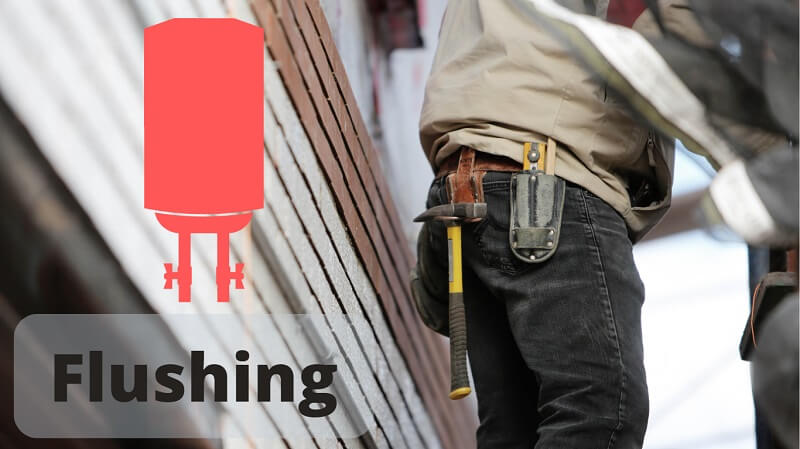Taking care is equally important for a human being and a machine. The service life of the equipment is equivalent to how much you take care of it. If you take care and maintain properly, you can get one hundred percent performance from an appliance. In this article, we will discuss the procedure of storage water heater flushing and maintenance in step by step so that you can understand properly.
Traditional Hot Water Heater
The traditional water heater is also called a storage water heater or tank water heater. In recent times, water heaters come up without any tank which is named as a tankless water heater or on-demand water heater. The tankless water heater is much popular in the present time. But these are a bit pricey. The storage tank water heater is popular for its reasonable price and easy installation process.
Usually, a tank water heater lasts over 10 to 12 years. But if you don’t maintain it properly its durability and efficiency decrease remarkably.
Why and when to flush the water heater?
Regular supply water contains various kinds of minerals. Over time it creates sediments in your tank. If you don’t wash out the sediments regularly, the water heater losing its efficiency. So you have to remove the sediments before it starts malfunctioning.
There is a common question about flashing- how frequently should it be flushed? The answer depends on some factors-
- The hardness of your water
- The region you live
- Usage pattern
- Water temperature
Generally, a tank water heater needs to be flashed once in a year. But it can be twice or thrice in a year for different conditions. However, if you use it very rarely then you can just flash it once or twice in its lifetime. If you want to know how to flush your tankless water heater, you can check the article which we published earlier.
Essential equipment
The flashing process of a tank water heater is easy and simple. If you have some simple equipment, you can clean the tank without a professional plumber that can save you some money.
Tools needed:
- A flat-headed Screwdriver
- A garden hoses
- A washing machine hose pipe
- Hand glove (for safety)
- First aid kits (if necessary)
Step by step guide to flush the tank
Below is the step by step method how you can flash the tank of your water heater.
Step 1: First locate your water heater and turn off the power supply. For electric water heater, you have to switch off the circuit breaker and for gas water heater you should disconnect the gas supply.
Step 2: Shut off the cold-water supply. Considering that the water inside the tank is warm or hot, take enough precaution and wear a heatproof hand glove.
Step 3: Turn on any hot water faucet in your house and relive the inner pressure of the water tank.
Step 4: Fasten a garden hose pipe to the drain valve. It normally locates near the lower part of the tank.
Step 5: Now open the drain valve and drain the water. Be careful, it can be hot.
Step 6: Be patient. The process can take as long as 10 to 30 minutes or more.
Back-flushing
Step 5: Sometimes the drain water flow is very low or sometimes there is no flow. If it happens then you can do a back-flush. Take a washing machine hose pipe and connect it with a threaded faucet. Connect the other end of the washing machine hose pipe with the garden hose pipe.
Step 6: Now open the faucet and blow the high-speed water through the drain valve. The water flow helps you break the sediment clog.
Step 7: When you finish with back-flushing, disconnect the washing machine hose and start flashing.
Step 8: When the whole tank is empty turn on the cold-water supply for 20 to 30 seconds to wash the sediment. You can apply this process several times to clear the sediment properly.
Step 9: Now turn off the drain valve and disconnect the garden hose.
Step 10: Open the cold-water valve and turn on all the hot water faucets as per before. Set all the lines as per the requirement.
Step 11: One last time check the drain valve and if it is OK then switch on the electricity or gas line.
If the condition of your drain valve is OK, then step 5 and step 6 is not applicable for you. When your tank is fully hot, check the hardness, speed, and temperature of the hot water. If there is any problem don’t delay calling a professional for help. That’s all. I think now you know the process of water heater flushing and maintenance. We will be happy if you leave a comment and share this article if found helpful. Have a good day!

